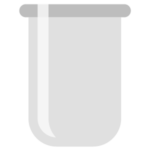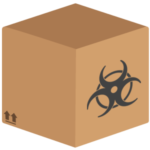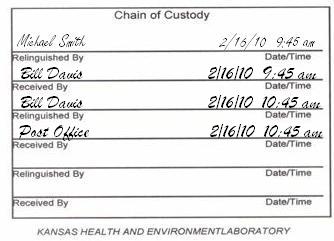Home > Clinical and Environmental Specimens > Stool and Food Specimens
Stool and Food Specimens
Stool Specimens
Stool specimens are the most common and the preferred specimen for most causative agents. Check with your laboratory before collecting.
Collection

- Collect and submit as soon as possible
- Typically collect from 5-10 cases not treated with antibiotics who present with illness characteristic of outbreak
- Considerations that depend on the suspected agent:
- Acceptability of rectal swabs
- If multiple specimens are needed per patient
- Use of preservative
- Acceptability of freezing
Storage & Transport

- Complete necessary laboratory forms
- Include patient information:
- Date of collection
- Date of onset
- Signs and symptoms
- Transport specimens via a lab courier service or by shipping
Interpretation

Positive for certain agent:
- Patient’s illness caused by agent
- Patient colonized with agent but illness not caused by agent
- Contamination of specimen
Negative for certain agent:
- Patient’s illness not caused by agent
- Collected too late in course of illness
- Specimen handled improperly
Food Specimens
Testing food samples takes time and resources, so foods are usually tested only after implication by an epidemiologic or environmental investigation. Because the presence and quantity of contaminants in food are in a dynamic state, their presence and quantity will change over time. Samples collected during an investigation may not be representative of the food ingested when the problem occurred, so the investigator should provide as much information as possible to the testing laboratory.
Collection

- Collect as soon as possible and store
- Follow local policies on collection of foods from private homes
- Test when food implicated by other studies
- Collect samples of foods consumed by cases
- Check with laboratory on collection and storage
- Keep frozen foods frozen
- Refrigerate perishable foods
- If testing >48 hours after collection, consult laboratory about freezing
Storage & Transport

- Label container and maintain a log which includes:
- Code and specimen number
- Brand, name, and type of product
- Product manufacturer and code/lot number
- Name of person collecting the sample
- Date, time, and place of collection
- Condition of packaging (e.g., open, intact)
- Complete necessary laboratory forms
- Provide sample information:
- Date of collection, when originally served, handling since time of ingestion
- Transport specimens via lab courier or by shipping
Interpretation

Positive for certain agent:
- Agent cause of outbreak (i.e., food is source)
- Agent present but not the cause of the outbreak (e.g., contaminated after the fact)
Negative for certain agent:
- Agent not present (i.e., food not source)
- Non-uniform contamination
- Agent inactivated/killed during handling
- Complexity of food product and testing procedures precluded detection of agent
Chain of Custody
Chain of custody is a chronological written record that identifies who had control over the specimen during what time period. Every person signing the form is responsible for the sample while it is in their possession.

The Chain of Custody form should serve as verification that the specimen was:
- Delivered to the lab
- Received by a designated courier and transferred to the lab
- Received by the lab
A documented Chain of Custody is also useful during future legal actions or to establish a clear line of sight for attribution. Each agency has its own form. Make sure you are familiar with your agency’s form.